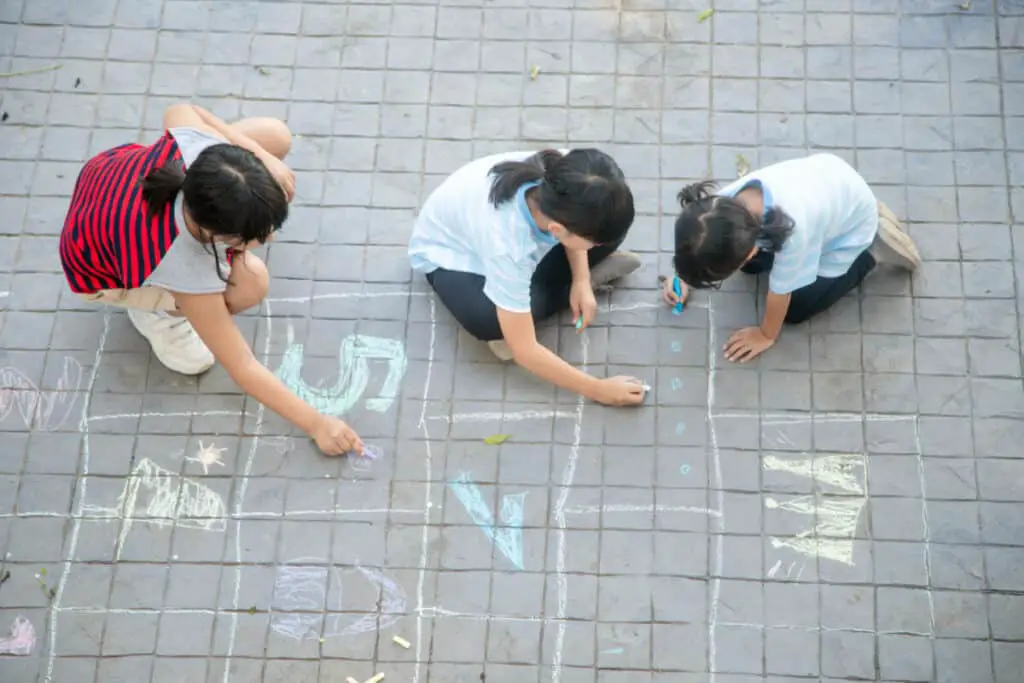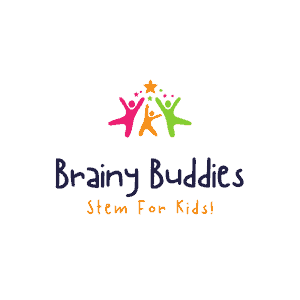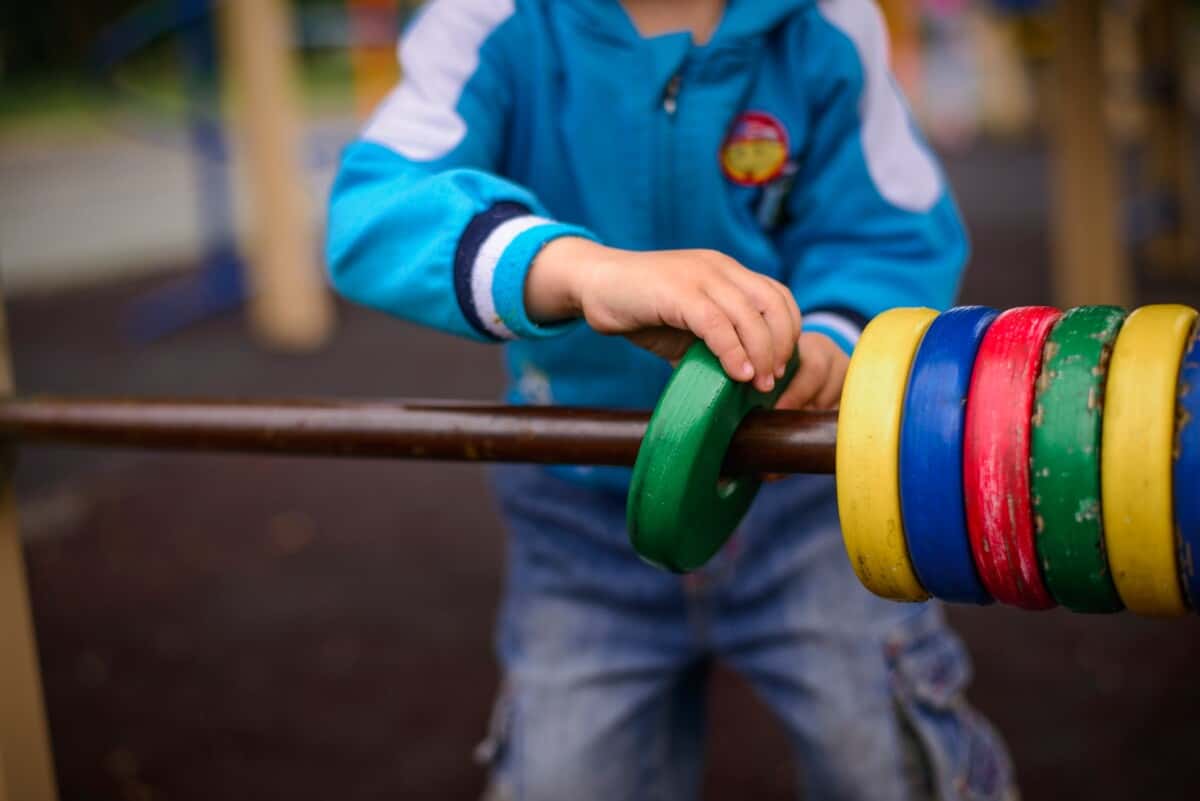Mathematics is more than just numbers and equations – it’s the key to unlocking logical thinking, solving complex problems, and honing critical thinking skills.
The best way to teach math to kids is by presenting mathematical concepts that spark their natural curiosity and support their educational journey.
Teaching math to kids is an exciting and diverse adventure. It involves a mix of hands-on STEM activities, visual aids, puzzles, real-world connections, technology, collaborative learning, storytelling, and personalized learning paths.
These methods are vital in understanding how to teach math to kids, making their learning experience meaningful, enjoyable, and relevant.
As we embark on this exploration, we’ll delve into practical and effective strategies for teaching math to children, focusing on the powerful combination of science, technology, engineering, and mathematics (STEM).
Table of Content
- Hands-On Learning Through STEM Activities
- Use Visual Aids and Manipulatives
- Incorporate Math into Daily Activities
- Interactive and Educational Technology
- Encourage Collaborative Learning
- Storytelling for Mathematical Context
- Math Fun with Games and Puzzles
- Conclusion
1. Hands-On Learning Through STEM Activities
Hands-on learning through STEM activities is a dynamic and practical approach to teaching math, particularly for children.

This method offers numerous advantages that go beyond traditional classroom instruction:
Tangible Understanding
- Allow children to manipulate physical objects, providing a concrete grasp of abstract mathematical concepts.
- Move beyond textbooks, enabling students to touch, feel, and interact with materials for a more profound comprehension.
Interactive Learning
- Capture children’s interest through the interactive nature of STEM activities.
- Maintain motivation by transforming students into active participants in the learning process.
Foster Curiosity and Excitement
- Create an environment that fosters curiosity and excitement about math.
- Hands-on experiences make learning an engaging adventure, sparking interest and enthusiasm.
Develop Critical Thinking
- Stimulate critical thinking and problem-solving skills.
- Present challenges that demand logical reasoning, spatial awareness, and analytical thinking.
Enhance Problem-Solving Strategies
- Encourage the development of problem-solving strategies crucial for mathematical proficiency.
- Students navigate through challenges, acquiring valuable skills applicable to various mathematical scenarios.
Examples of STEM Activities
Balance Scale Engineering: Provide materials for constructing preschool balance scales, allowing kids to explore mathematical concepts related to weight and balance.
Goal: Engage in hands-on experimentation to understand the principles of equilibrium.
Lego Robotics: Utilize Lego robotics to integrate technology and engineering with math.
Goal: Challenge students to build and program robots, promoting problem-solving and mathematical thinking.
Implementing hands-on STEM activities reinforces mathematical concepts and nurtures a holistic understanding, making learning enjoyable and memorable for students.
2. Use Visual Aids and Manipulatives
In a lesson about percentages, bring in a stack of play money. Show students that if they have ten one-dollar bills and one of them represents 10%, they can physically see and touch the fraction of the whole amount.
Teaching geometry? Provide students with modeling clay to create different shapes. As they mold and manipulate the clay, they visualize and feel the properties and angles of geometric figures, enhancing their understanding.
- Exploring measurement concepts? Use a tangible item like a ruler or measuring tape.
- Have students measure objects in the classroom, feeling the scale and length with their hands.
- This practical experience makes the abstract notion of measurement more concrete.
Transform a lesson on subtraction with negative numbers into a game using a number line1. Place the students physically on the line and ask them to move backward, reinforcing that moving left represents subtracting.
For a deeper understanding of probability, use a jar filled with colored marbles. Have students reach in without looking and pull out a marble.
The tactile experience of feeling the different marbles enhances their understanding of probability distribution. Teach multiplication by creating an array with everyday objects like egg cartons.
Each carton section can represent a group, making the multiplication process more tangible as students physically arrange and count the items.
By weaving these practical examples into your teaching, you demystify mathematical concepts and provide students with hands-on experiences that make learning math enjoyable and memorable.
3. Incorporate Math into Daily Activities
Incorporating math into daily activities is a highly effective and beneficial approach to teaching mathematics to kids.

This methodology goes beyond traditional classroom settings, recognizing the value of practical application and real-world relevance in fostering a deep understanding of mathematical concepts.
Daily activities provide a contextual and meaningful framework for learning. Children are naturally curious about the world around them, and by integrating math into their everyday experiences, they can see the relevance of mathematical concepts in their immediate environment.
Whether counting objects during playtime, recording weather such as temperature fluctuations, or calculating time during daily routines, these activities bring abstract mathematical ideas to life.
Moreover, integrating math into daily activities promotes a seamless and continuous learning process.
Instead of confining math lessons to specific time slots, incorporating math into everyday life allows for ongoing engagement with mathematical concepts.
Continual exposure helps reinforce learning as children encounter and practice math in various daily contexts.
This approach contributes to a more organic and intuitive understanding of mathematical principles.
Incorporating math into daily activities is a powerful and enriching way to teach mathematics to kids.
4. Interactive and Educational Technology
Interactive and educational technology has transformed math teaching, making it more dynamic and engaging than traditional methods.
Key Benefits
Customization: Technology allows personalized learning experiences catering to individual needs and preferences.
Clarifying Abstract Concepts: Visual aids and interactivity help simplify complex mathematical theories, bridging the gap between theory and practical application.
Hands-On Learning: Interactive activities enable students to participate and understand complex math concepts actively.
Effective Strategies for Teaching Math with Technology
Customizable Learning Platforms:
- Select platforms that you can tailor to different learning styles and paces.
- Adjust content to suit each student’s unique needs and learning speed.
Interactive Simulations:
- Employ simulations to demonstrate mathematical concepts visually.
- Choose tools that promote exploration and hands-on experimentation.
Virtual Manipulatives:
- Introduce digital tools to illustrate abstract ideas tangibly.
- Allow students to interact with digital objects for a deeper understanding.
Engaging Interactive Lessons:
- Design lessons that require active student participation.
- Incorporate multimedia elements to enhance engagement and interactivity.
Real-Time Assessments:
- Implement quizzes and evaluations that offer immediate feedback.
- Use assessment data to customize future lessons for targeted learning improvements.
5. Encourage Collaborative Learning

Collaborative learning promotes active engagement among students. When working together on mathematical problems or projects, children are actively involved in discussions, problem-solving, and knowledge-sharing.
Active participation enhances their understanding of mathematical concepts and cultivates a sense of ownership and enthusiasm for the subject. It fosters a supportive and inclusive learning environment. Students of varying skill levels work together collaboratively, creating a natural peer support system.
Through collaborative efforts, children can learn from one another, share diverse perspectives, and collectively navigate the challenges posed by mathematical concepts.
Encouraging collaborative learning in mathematics for kids is beneficial because it promotes active engagement, creates a supportive and inclusive environment, nurtures critical thinking skills, develops interpersonal skills, addresses diverse learning styles, and mirrors real-world problem-solving scenarios.
This video has excellent examples of practical collaborative learning techniques.
6. Storytelling for Mathematical Context
Embarking on a mathematical journey enriched with storytelling can breathe life into the learning experience. Here are some tips to seamlessly weave math into the fabric of captivating tales:
Real-Life Connection: Craft stories that seamlessly integrate math into daily scenarios. For instance, engage students in a virtual shopping spree, where they navigate through price tags and practice addition and subtraction in a bustling marketplace.
Engaging Imagination: Infuse narratives with the thrill of adventure or the intrigue of solving a puzzle. Transform a mundane math problem into an enthralling mystery, with each solution step unraveling a clue, sparking curiosity and engagement.
Intrinsic Motivation: Design stories that tap into children’s interests, making math an integral part of their world. Dive into a math concept through a tale featuring a favorite hobby or a beloved character, ensuring that learning becomes a personalized and enjoyable experience.
Holistic Learning: Integrate math seamlessly into broader narratives, showcasing its relevance. Embark on a culinary escapade to explore fractions, illustrating how understanding proportions is critical to crafting delectable recipes.
Comprehensively understand the interconnectedness of various math concepts within a single story. For example, follow characters building a treehouse, seamlessly weaving geometry and measurement as they navigate angles, lengths, and areas, thereby revealing the multidimensional beauty of mathematics.
Educators can make math relatable and ignite excitement and curiosity by embracing the enchanting power of narratives.
7. Math Fun with Games and Puzzles

Infusing fun and games into math education transforms the traditional perception of math as a daunting and abstract subject into an enjoyable and interactive learning experience.
This approach offers numerous benefits contributing to a child’s overall mathematical development. Games and puzzles provide a context for learning that’s both relatable and enjoyable.
Children, by nature, are curious and thrive in environments that encourage exploration. Math games create a playful atmosphere where kids can interact with mathematical concepts in a way that mirrors their everyday experiences.
Whether counting, measuring, or solving problems, games offer a tangible and relatable platform for mathematical exploration.
The competition and challenge inherent in games and puzzles stimulate a child’s cognitive development. As kids engage in critical thinking and problem-solving to solve puzzles or win games, these activities enhance their mathematical skills and develop crucial cognitive abilities, such as logical reasoning and strategic planning.
The interactive nature of games and puzzles encourages active participation, turning passive learners into enthusiastic problem solvers. Children are more likely to retain and apply mathematical concepts when actively involved in learning.
Through games, they discover the joy of discovering patterns, making connections, and using mathematical principles in a fun and dynamic way.
Educators and parents create an environment where learning becomes an adventure by integrating play into math education, sparking curiosity and enthusiasm for mathematical exploration.
Conclusion
As we navigate the landscape of math education for kids, it becomes evident that a dynamic and holistic approach is critical. By embracing STEM principles, incorporating play, connecting math to the real world, and fostering a growth mindset, educators can pave the way for a generation of mathematically confident and capable individuals. Through continuous professional development, leveraging technology, and creating supportive learning environments, we empower children to understand math and appreciate its beauty and relevance in the world around them.


